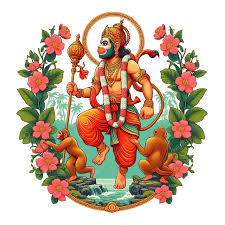
Hanuman Jayanti Puja is a sacred Hindu celebration that marks the birth of Lord Hanuman, the powerful devotee of Lord Rama and a symbol of strength, devotion, courage, and loyalty. It is observed on the full moon day (Purnima) of the Chaitra month (March–April), though the date may vary regionally. Hanuman Jayanti is celebrated with great devotion across India, especially in states like Maharashtra, Karnataka, Andhra Pradesh, and Tamil Nadu.
Lord Hanuman, also known as Anjaneya, Maruti, or Bajrangbali, is believed to be an incarnation of Lord Shiva. He played a key role in the epic Ramayana, known for his unmatched devotion to Lord Rama, his incredible strength, and his role as a protector of the righteous.
The Hanuman Jayanti Puja begins early in the morning with a ritual bath and purification of the puja area. A picture or idol of Lord Hanuman is placed on the altar, decorated with flowers (especially red hibiscus), sindoor (vermilion), betel leaves, and banana leaves. Offerings include fruits, coconut, jaggery, panakam (jaggery water), and butter, which Hanuman is believed to love.
Devotees chant Hanuman Chalisa, Hanuman Ashtak, and other stotras dedicated to Lord Hanuman. Sankat Mochan Hanuman Ashtak is also commonly recited. Many also perform 108 or 1008 nama japa of “Om Hanumate Namah.” Devotees visit Hanuman temples, tie sacred threads, and participate in bhajans and kirtans.
Fasting and offering special naivedyam (food) are common practices. The puja concludes with an aarti and distribution of prasadam.
Hanuman Jayanti Puja inspires inner strength, fearlessness, discipline, and unwavering devotion. It is believed that sincere prayers to Lord Hanuman remove obstacles and protect devotees from harm and negativity.

